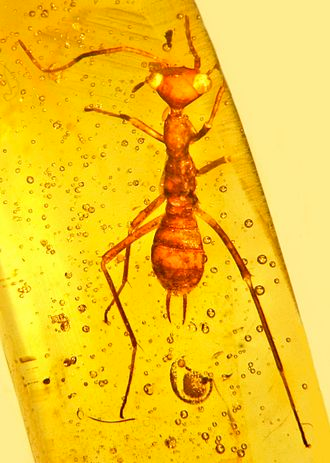A rare 99-million-year-old fossil that shows an enigmatic haidomyrmecine “hell ant” clamping down on its cockroach-like prey.
“Since the first hell ant was unearthed about a hundred years ago, it’s been a mystery as to why these extinct animals are so distinct from the ants we have today,” says NIJT’s Phillip Barden, lead author of the study. “This fossil reveals the mechanism behind what we might call an ‘evolutionary experiment,’ and although we see numerous such experiments in the fossil record, we often don’t have a clear picture of the evolutionary pathway that led to them.”
The reason Barden and the team see this as an “evolutionary experiment,” is because of how this feeding mechanism differs from that seen in the ants of today, which feature mouth parts that move together laterally. Conversely, the hell ant, which is thought to have vanished around 65 million years ago, moves its mandibles in a vertical fashion.
These findings help fill in some of the blanks around the feeding habits of some of the early ant species (of which hell ants are one), and how this species sustained itself across a 20-million-year existence. The team now hopes to build on this work by investigating what causes some species to become extinct while other survive and thrive.
https://newatlas.com/biology/ancient-fossil-killer-hell-ant-prey/
